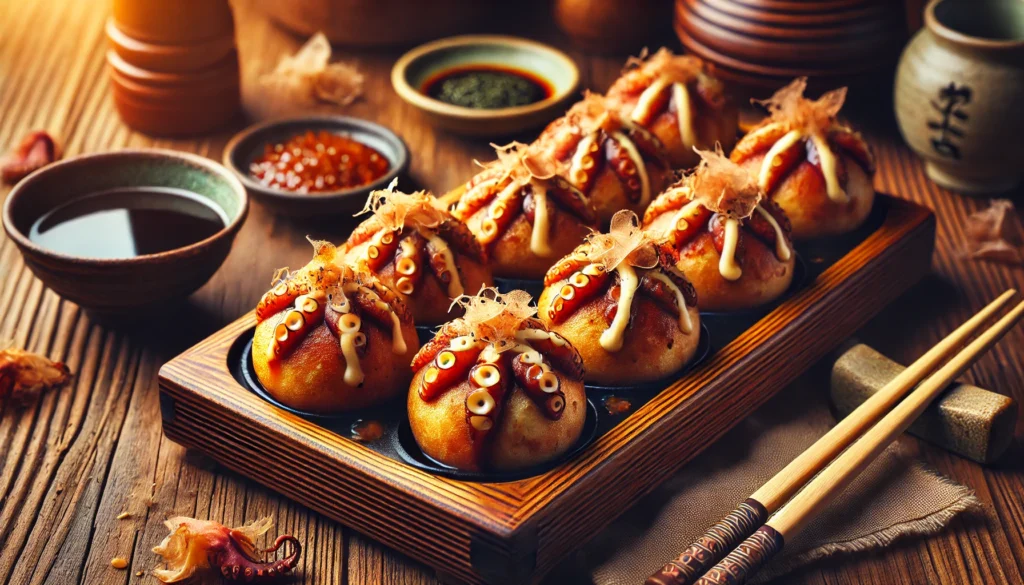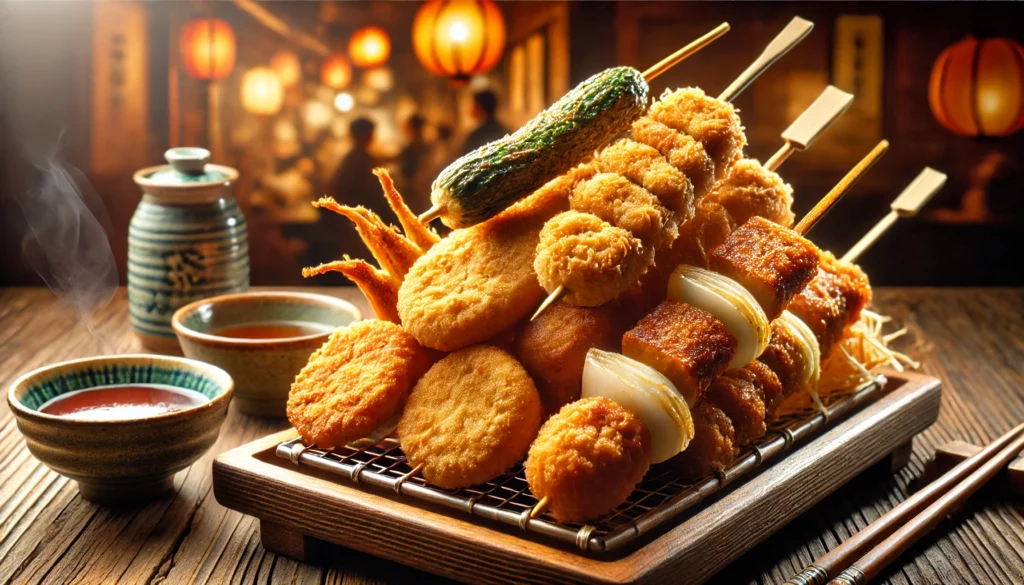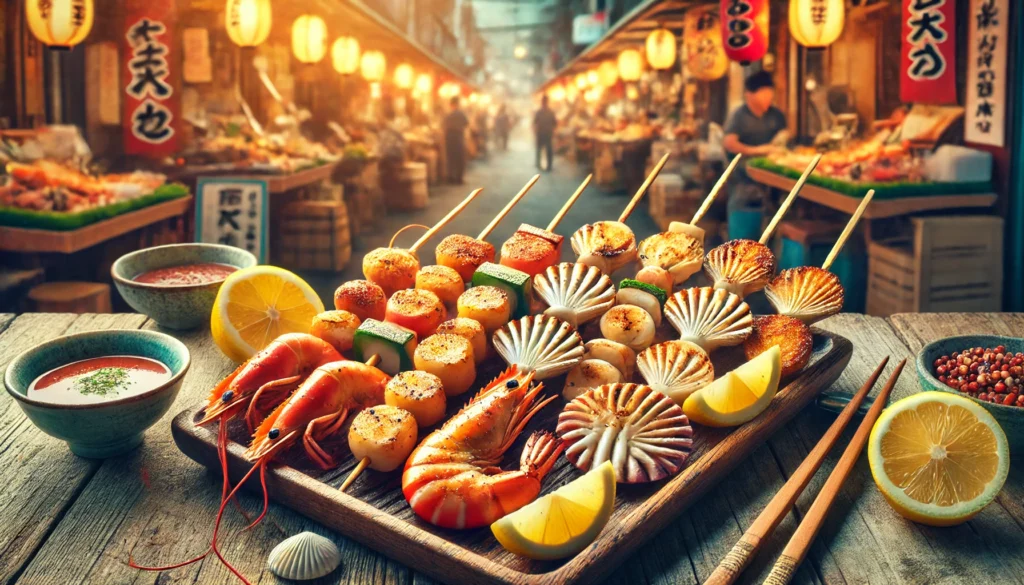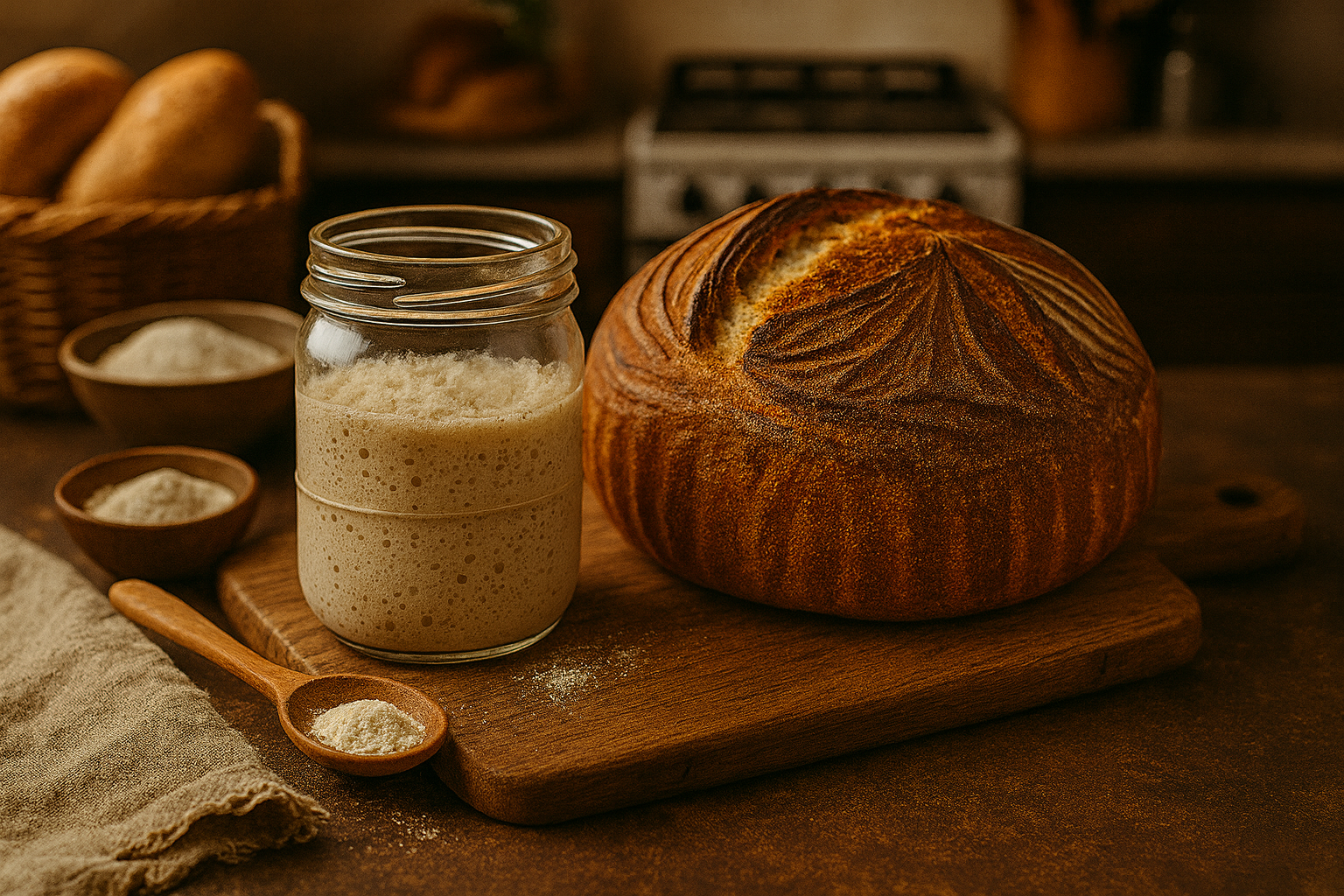Table of Contents
Introduction to Japanese Street Food Culture
Japanese street food occupies a central role in the nation’s culinary landscape, encapsulating not only the flavors but also the cultural narratives of various regions. Historically, the roots of street food in Japan can be traced back to as early as the Edo period (1603-1868), when vendors began selling quick meals to merchants and travelers. This tradition has evolved over the centuries, maintaining a significant position within Japan’s vibrant urban life. Local specialties, such as takoyaki and yakitori, showcase the diversity of regional ingredients and cooking techniques, illustrating how street food offers a delectable glimpse into Japan’s rich culinary heritage.
The culture surrounding street food is imbued with social significance, as it often serves as a gathering point for friends, families, and visitors. Street food stalls provide an informal setting where people can connect, share experiences, and enjoy diverse meals in a lively atmosphere. Festivals, known as matsuri, regularly feature food stalls offering a variety of delicacies that reflect local traditions and seasonal ingredients, further emphasizing the social aspect of Japanese street food culture.
Moreover, food stalls contribute substantially to the local economy, providing opportunities for small-scale business owners and entrepreneurs. They not only foster innovation but also support community bonds as locals gather around popular stalls. The emergence of global interest in Japanese cuisine has further popularized street food, with many vendors adapting their offerings to attract both domestic and international tourists. This balance between tradition and modernization ensures that Japanese street food remains a dynamic and integral part of the culinary scene, continuing to enchant those who seek the authentic and flavorful experience that street food has to offer.
The Influence of Festivals on Street Food
In Japan, the relationship between festivals, known as matsuri, and street food is intricate and deeply rooted in the culture. Matsuri are vibrant celebrations that often coincide with seasonal changes and significant local events, drawing large crowds eager to participate in the festivities. During these occasions, street food vendors come together to offer an array of delectable options, each reflecting the flavors and traditions of the region. The atmosphere of festival grounds is filled with the enticing aromas of various foods, attracting attendees with the promise of unique culinary experiences.
Street food at matsuri often features popular staples such as takoyaki, a savory octopus-filled snack, and yakitori, grilled skewered chicken. Each festival has its offerings, as vendors curate their menus based on local specialties or seasonal ingredients. For example, during the summer months, you may find kakigori, a refreshing shaved ice dessert, perfect for beating the heat, while autumn festivals often showcase freshly harvested ingredients in dishes like roasted sweet potatoes and chestnut rice.
Furthermore, matsuri provide a platform for more obscure, innovative dishes that reflect the creativity of local vendors. Some festivals may showcase fusion foods, combining traditional Japanese flavors with modern twists or influences from other cuisines. This dynamic exchange allows attendees to explore new tastes and dishes that may not be available elsewhere. As visitors stroll through festival markets, they are invited to partake in the culinary storytelling of each dish, steeped in regional history and seasonal practices.
Essentially, matsuri serve as crucial occasions for street food culture in Japan to flourish. By intertwining culinary arts with celebratory events, these festivals have established a unique ecosystem where traditional foods and contemporary innovations coexist, delighting the senses and fostering community connections.

Top Must-Try Street Foods in Japan
Japan’s vibrant street food scene is a culinary adventure that reflects the country’s rich culture and diverse regional flavors. Among the favorites, takoyaki stands out. Originating from Osaka, this savory snack consists of batter filled with diced octopus, tempura scraps, pickled ginger, and green onions. The mixture is cooked in a special molded pan, resulting in crispy balls of goodness topped with takoyaki sauce, bonito flakes, and mayonnaise. Encountering a takoyaki stall in Japan is a must for any food lover.
Another beloved option is yakitori, which are skewered and grilled chicken pieces, typically seasoned with salt or brushed with a sweet soy-based glaze known as tare. These skewers are available in various forms, with different chicken parts including thighs, skin, and liver being popular choices. Yakitori is commonly enjoyed at izakayas (Japanese pubs) or food stalls and often served with a side of dipping sauce.
Okonomiyaki, often referred to as “Japanese savory pancakes,” is a versatile dish that can be adapted to suit various tastes. The batter is made from flour, grated yam, dashi, and shredded cabbage, combined with various toppings such as meat, seafood, and cheese. Okonomiyaki is traditionally cooked on a hot plate, allowing diners to customize their creation right at the table. The dish is especially prominent in Osaka and Hiroshima, each boasting its own distinct preparation style.
Taiyaki is a popular sweet street food that resembles a fish and is stuffed with a variety of fillings, including red bean paste, custard, and chocolate. This cake-like treat is cooked in a fish-shaped mold, creating a crispy exterior with a warm, gooey center. Taiyaki can be found at many food stalls, making it a delightful ending to any street food exploration.
Other street foods to consider include yakisoba, stir-fried noodles mixed with vegetables and meat, and kakigori, a shaved ice dessert topped with syrup and other sweet condiments. Together, these dishes provide a glimpse into Japan’s diverse culinary landscape, making street food an essential aspect of any visit to this fascinating country.
A Deep Dive into Takoyaki: The Iconic Street Snack
Takoyaki is a quintessential Japanese street food that has gained immense popularity beyond its home country. Originating from Osaka in the early 20th century, this delectable snack was created by a street vendor named Mr. Iwakichi, who combined wheat flour, dashi broth, and diced octopus to form balls of savory delight. Over the years, takoyaki has undergone various adaptations, but the core essence has remained intact, solidifying its status as an iconic street food.
The preparation of takoyaki involves a specially designed griddle, which features half-spherical molds. To make takoyaki, a batter composed of flour, egg, and dashi is poured into the molds, followed by diced octopus, green onions, and tempura scraps. As the batter cooks, it is continuously turned until it forms a golden-brown crust, while the inside remains soft and creamy. The traditional filling includes not just octopus but can also feature other ingredients such as shrimp or cheese, appealing to a wider audience.

One of the defining features of takoyaki is its topping, which includes a drizzle of takoyaki sauce, a savory sauce that resembles Worcestershire, and a sprinkle of bonito flakes, which dance as they react to the warmth of the snack. Additionally, mayonnaise, green onions, pickled ginger, and aonori (seaweed flakes) are often added, enhancing both the flavor and visual appeal of the dish. This variety in toppings allows for customization based on personal preferences, inviting each consumer to indulge in their unique experience.
Takoyaki can be found at numerous locations, from bustling street stalls to specialized restaurants dedicated solely to this street snack. For those seeking the authentic experience, visiting a street vendor during a festival can provide both dense flavor and a memorable atmosphere. It is recommended to enjoy takoyaki fresh off the griddle, allowing diners to appreciate its contrasting textures and flavors fully. With its ever-evolving appeal, takoyaki remains a beloved dish that continues to delight food enthusiasts both in Japan and around the world.
Tantalizing Taiyaki: Beyond Just a Sweet Treat
Taiyaki is a beloved Japanese street food that has captured the hearts and taste buds of many with its unique fish-shaped appearance and delectable fillings. Originating in Tokyo during the Meiji era, this delightful treat was initially inspired by an older snack called “obanyaki.” Taiyaki transitioned from its original round shape to the more identifiable fish form, which has since become a symbol of Japanese street food culture.
The traditional filling of taiyaki is made from sweet red bean paste, known as “anko.” However, as the popularity of this dessert has spread, numerous variations have emerged across Japan. Popular fillings now also include custard, chocolate, and sweet potato. In recent years, savory alternatives, such as cheese or yakisoba, have also gained traction, showcasing the versatility of taiyaki as more than just a sweet treat. This adaptability has contributed to its sustained popularity among both locals and tourists alike who seek to experience authentic Japanese cuisine.
Modern-day taikayaki stands often utilize innovative techniques to create unique flavors and presentation styles. For instance, some vendors have begun experimenting with colorful batter, resulting in visually striking taiyaki that appeals to the social media-savvy generation. Additionally, gourmet versions of taiyaki may feature luxurious fillings, such as matcha or seasonal fruits, elevating the traditional street food into a more refined dessert option.

In conclusion, taiyaki remains an iconic part of Japanese street food, combining historical roots with contemporary flair. Its diverse array of fillings and formats not only cater to various palates but also reflect the innovative spirit of Japanese cuisine. Whether enjoyed in a traditional form or with a modern twist, taiyaki continues to tantalize the taste buds of those who encounter this charming delicacy.
Street Food Etiquette: How to Enjoy Your Meal
Enjoying street food in Japan is not just about savoring the unique flavors; it is also about adhering to the cultural etiquettes that enhance the overall experience. Observing the local customs is essential for a respectful and enjoyable interaction with street food vendors. One of the fundamental practices is to wait in line patiently. Japanese culture values orderliness and respect for others, and skipping ahead in line is frowned upon. It is important to follow the queue patiently until it is your turn to place an order.
When it comes to indulging in your chosen delicacies, the manner of eating is notable. While it is common to eat while standing, especially in bustling street markets, walking while eating is generally discouraged. This practice is rooted in the idea of being mindful of your surroundings and ensuring that you engage fully with your meal and the environment. Eating while standing allows you to enjoy your food without impacting pedestrian traffic and maintains the streets’ cleanliness.
While interacting with vendors, politeness goes a long way. A simple “arigatou” (thank you) shows appreciation for the service and the food. Many vendors take great pride in their offerings, so expressing genuine interest and gratitude can enhance the experience for both parties. Additionally, handling food with care is crucial; for instance, using provided utensils rather than your fingers encourages cleanliness and respect for the food being served.
Furthermore, it is customary to dispose of any waste properly. Japan emphasizes cleanliness, so finding a designated trash bin to dispose of your food wrappers is vital. Overall, understanding and respecting these unspoken rules of Japanese street food etiquette not only enriches your culinary adventure but also fosters a sense of community and mutual respect in this vibrant culture.
Exploring Regional Specialties: Street Food Across Japan
Japanese street food is a vibrant reflection of the country’s diverse geography and culture, with each region presenting its unique offerings that showcase local ingredients and culinary traditions. For instance, Hiroshima is famed for its okonomiyaki, a savory pancake made with flour, eggs, shredded cabbage, and a variety of other ingredients, such as seafood and meat. Unlike its Kansai counterpart, Hiroshima’s version incorporates layers of these ingredients, creating a distinct flavor profile that highlights the region’s unique approach to this popular dish.

Traveling to Osaka, one can experience the city’s renowned kushi katsu, which consists of skewered and deep-fried meat and vegetables. This dish is deep-rooted in Osaka’s food culture, where vendors line the streets offering a variety of kushi katsu items. The lively atmosphere of the street markets is complemented by the dishes served with a tangy dipping sauce, allowing guests to indulge in a communal dining experience that strongly emphasizes Osaka’s distinctive culinary traditions.

Hokkaido’s street food reflects the region’s rich seafood offerings, thanks to its access to the Pacific Ocean and the Sea of Japan. Iconic dishes from Hokkaido include seafood on a stick, grilled crab, and fresh sashimi, celebrating the freshness and quality of its marine life. The region’s cold climate also fosters unique agricultural products, leading to hearty options like corn on the cob, often served grilled with butter, showcasing the local flavors that resonate throughout Hokkaido’s food scene.

In essence, Japan’s street food landscape is a mosaic of regional specialties, each telling a story of local ingredients, cultural influences, and traditional preparation methods. These specialties not only satisfy the palate but also offer insights into the rich tapestry of Japanese culinary heritage.
Street Food Markets to Visit: A Culinary Journey
Japan is renowned for its vibrant street food culture, with bustling markets dotting its urban landscapes. Among the most notable is Nishiki Market in Kyoto, a culinary paradise stretching over 400 meters. This lively market features a diverse array of food stalls offering local delicacies such as yakitori, pickled vegetables, and fresh seafood. Open from 9 AM to 6 PM, Nishiki Market is ideal for those seeking an authentic taste of Kyoto. Visitors are encouraged to sample items like yudofu while meandering through the historic streets that surround the market.
Another must-visit destination is Kuromon Ichiba Market in Osaka, often described as “Osaka’s kitchen.” This market is famous for its high-quality ingredients and vibrant atmosphere. It boasts over 150 food vendors, offering everything from grilled seafood to delicious osaka-style sushi and kushikatsu (deep-fried skewers). Kuromon Ichiba Market is open from 9 AM to 6 PM, making it a perfect spot for both breakfast and lunch. Navigating the market is relatively easy; simply follow the crowds and let the enticing aromas guide you to your next culinary delight.
In Tokyo, visitors should not miss Ameyoko Market, located near Ueno Station. This dynamic street market is known for its eclectic offerings, including fresh produce, sweets, and numerous street food stalls. Open daily from 10 AM to 8 PM, Ameyoko provides an exceptional opportunity to engage with local vendors and sample unique treats such as taiyaki and matcha desserts. While exploring the market, be mindful of your surroundings, as it can become quite crowded, especially on weekends.
Overall, these street food markets represent a culinary journey through Japan’s rich gastronomic heritage. Each market offers a unique experience, showcasing regional specialties while inviting visitors to indulge in the vibrancy of Japanese street food culture.
Conclusion: The Joy of Japanese Street Food
Japanese street food represents a delightful fusion of tradition, innovation, and social engagement, capturing the essence of Japan’s culinary landscape. From the savory, pancake-like layers of okonomiyaki to the unique, octopus-filled delights of takoyaki, street food is not merely sustenance but a cultural experience. Each dish tells a story, drawing from historical influences and regional ingredients that showcase Japan’s rich heritage.
Exploring street food offers an opportunity to engage with local communities, providing insights into the daily lives of the Japanese people. Vendors, often passionate about their craft, serve not just food but reflections of their culture and dedication. The bustling food stalls and lively markets create vibrant atmospheres where visitors can interact with locals, fostering a deeper connection to the vibrant society of Japan. Trying street food transcends mere meal times; it becomes an adventure in tasting, discovering the myriad flavors that each region has to offer.
For travelers eager to understand Japan more profoundly, indulging in street food is essential. The appeal lies not only in the varied tastes but also in the experience of eating where locals congregate, savoring dishes that embody Japanese values of quality, freshness, and artistry. As you plan your next visit, consider stepping away from the familiar choices and venturing into the realm of street food. Embrace the chance to delight your palate with both traditional favorites and contemporary twists, ensuring a memorable journey through Japan’s culinary heritage.






